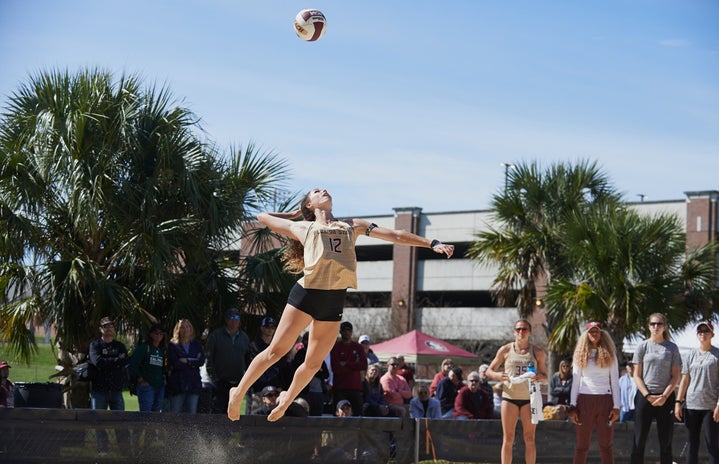Females partaking in sports has always been a contested subject. Historically, women were not allowed to participate in sports for fear that men may see them sweat *GASP*. When women were finally allowed to compete in high-profile sporting events like the Olympics, they were limited to sports such as croquet and sailing, which require little physical exertion. While you may hear this and think “Well that’s in the past, women have a respected presence in sports now” you would only be half right. It is true that female sports have come a long way, but this past year has shown us how much further they still need to go.
The most obvious example of the discrepancies between male and female sports is the pay gap. Yes, you can argue that men are paid more because of the TV rights and media revenue, but women’s sports are not broadcasted at nearly the same rate, so they don’t have a fighting chance at bringing in the same revenue. The solution is simple, broadcast female sports to the same extent as male sports. When was it decided that the NBA deserved more screen time than the WNBA? The irony of this is that the decision was probably made by a man who would have his ankles broken time and time again by any woman in the WNBA.
While money is obviously the root of all evil, in female sports the evil unfortunately goes so much further than just the wage gap. Even as women continue to dominate and prove their worth in the sporting world, there are still some events open only to men. Decathlon, a track and field event where contestants compete in 10 separate events for a total combined score, is a male-only sport in the Olympics. Additionally, the 50km race-walk is only open for men to participate in.
Women have been repeatedly disqualified from events for having too much testosterone in their body, implying that the primarily male hormone is the be all and end all for athletic excellence. The biological composition of women’s bodies is being fought over on the world athletic stage. The simple fact that a woman’s body may be similar to a man’s is too much for some to handle, especially considering that many of these women have athletic abilities close to or better than their male counterparts.
In addition to the governing bodies of sport, women are contested as legitimate athletes by the general public. When you search on the internet “Female Sports Beijing 2022” one of the first articles that pops up is one ranking the “Top 10 Hottest Female Athletes in Beijing 2022 Olympics”. Both in sports and in life, women struggle to be recognized simply for their abilities, always being critiqued on how they look as they perform.
Female ski jumping was only added to the Olympic agenda at the Sochi 2014 games and even still, women are only allowed to compete on the Normal Hill, not the Large Hill. To make matters worse, there are only 40 qualifying spots for the women’s event, whereas 65 men get the chance to compete in their respective event. The current Olympic games has seen five female competitors be disqualified for their uniforms not being tight enough. While the official ruling was that the loose material could give them an advantage in the air, the women argued that their uniforms had already been approved prior to the event and that this was not a concern in the men’s event.
Outside of the Olympics, women are fighting to have professional leagues developed so that they too can compete at the highest level of the sport. This past summer saw more than 4 million Canadians tune in to watch the Canadian women’s soccer team win gold at the Tokyo Olympics, yet there are no pro soccer leagues for women in Canada. Additionally, there has been a push for the expansion of the WNBA into Canada. Without professional leagues, women struggle to train and develop their skills, yet still show up to the biggest sporting events in the world and dominate. One can only imagine how the female sports world will boom with the creation of female professional leagues.
Overall, female sports have a long journey ahead of them. Equal opportunities are needed and must be pushed for from both inside and outside of the governing bodies of sport. We as a society must advocate for women to have a place to play their sport. Without an equal playing field, male sports will continue to dominate the sports world. Female sports have definitely come a long way, but it is crucial that the fight for equality in sports continues.


